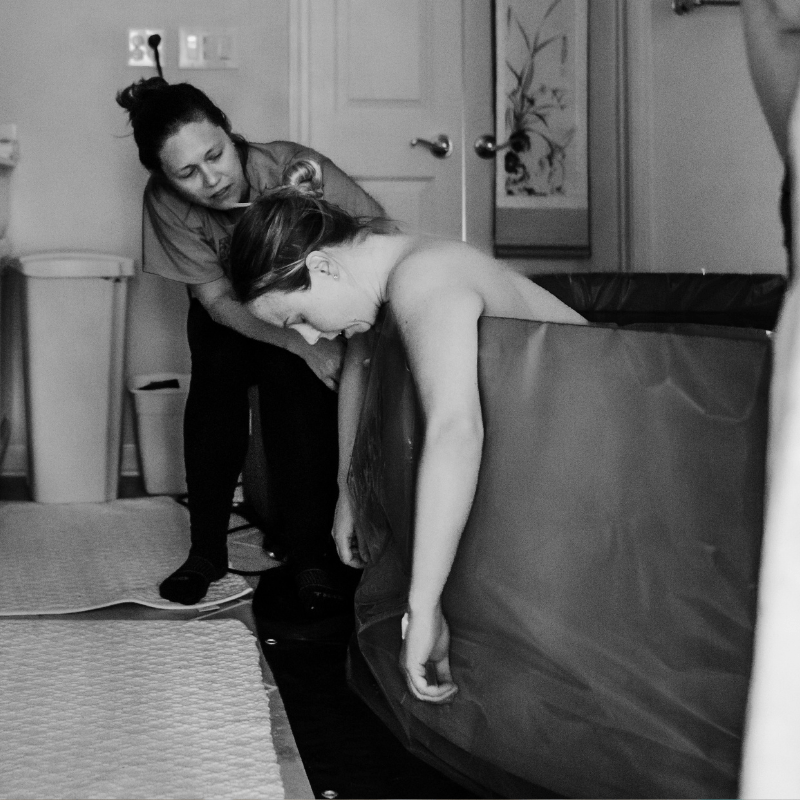How does water birth work?

How does water birth work? Can everyone give birth in water and is it really good for the baby? We have investigated the matter further!
What is water birth?
Water birth means giving birth to the baby in water, usually sitting in a small pool or lying in a bathtub of some sort. It is relatively new to offer water birth in healthcare, but the fact is that the first known water birth dates back to 1803 in France. It was then a woman who had an extremely prolonged labor and found it very difficult to push out her baby, but when she lay in a tub of warm water, she was able to deliver the baby.
How warm should the water be during a water birth?
The water temperature during a water birth should always be 37 degrees Celsius. It is important that you do not overheat during the dilation phase (or if you bathe at other times during pregnancy). If you become too warm, the baby's heart rate can rise too much, and you may need to get out of the bath.
What are the benefits of giving birth in water?
Bathing during labor has several benefits. The warm water can both promote and facilitate labor and has a pain-relieving effect. It can therefore also reduce the need for other pain relief during labor, which many see as a positive thing.
3 benefits of water birth
- The water provides support and relaxation, making it easier to breathe deeply and calmly.
- The warmth has a pain-relieving effect that can reduce the need for other pain relief.
- Many find it easier to "become one" with the contractions, making them feel less difficult to handle.
Are there any risks with giving birth in water?
If the woman is healthy and the pregnancy has been good with an uncomplicated labor, it is completely safe to give birth in water. Many wonder how it works when the baby is born underwater and if there is a risk of the baby, for example, inhaling water. Newborn babies who are born and are doing well have a built-in diving reflex. This means that the baby instinctively closes its airways when it comes out, preventing the inhalation of water. In this way, it is completely safe for the baby to be born in water.
What are the disadvantages of giving birth in water?
Even though it is safe to give birth in water, there are some things that can arise that might become problematic.
3 disadvantages of water birth
- It is common for the woman to empty her bowels during labor, and in a regular birth, this is not an issue as the midwife can quickly clean it up. In a water birth, the feces go directly into the water, which increases the risk of infection. However, midwives experienced in water births are very skilled and quick at "sieving" it out, so it does not have to be a problem.
- When choosing to give birth in water, it is often done with the belief that the water's pain relief is so significant that no other pain relief is needed. This can be true, but it can also be a big disappointment for those who do not find the pain relief as effective as they imagined, requiring them to get out for other anesthesia.
- It is easy to become dehydrated when giving birth in water. It is important to drink plenty even if you do not feel thirsty. Invest in a proper and good water bottle with a straw that you can bring with you during labor.
Can anyone give birth in water?
How you want to give birth is your own choice, but there are certain criteria that may advise against a water birth.
You should not give birth in water if you:
- Have had abnormal vaginal bleeding
- Have or have recently had a fever
- Have taken an epidural or sedative medications
- Have any form of blood-borne infection
- Are giving birth before 37 weeks
- Have abnormal fetal heart rates
Summary
In conclusion, we can state that water births are becoming increasingly common around the world and that many women who have given birth in water have found it to be a positive experience. It can make contractions easier, and as long as no complications arise, it is a safe and secure way to give birth. Regardless of how you choose to proceed with your delivery, we wish you the best of luck and hope that your experience is as positively overwhelming and wonderful as it should be. <3
```
